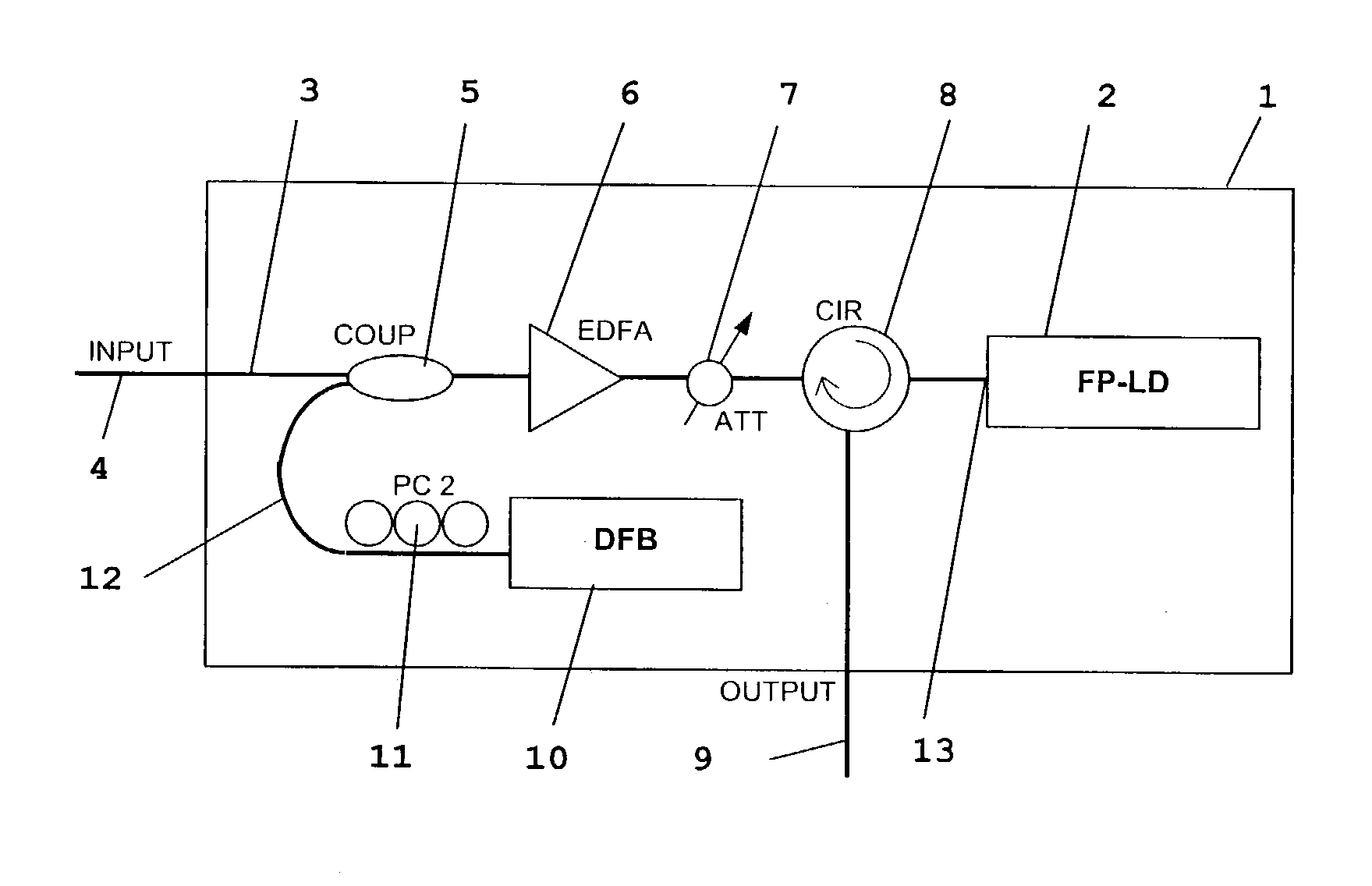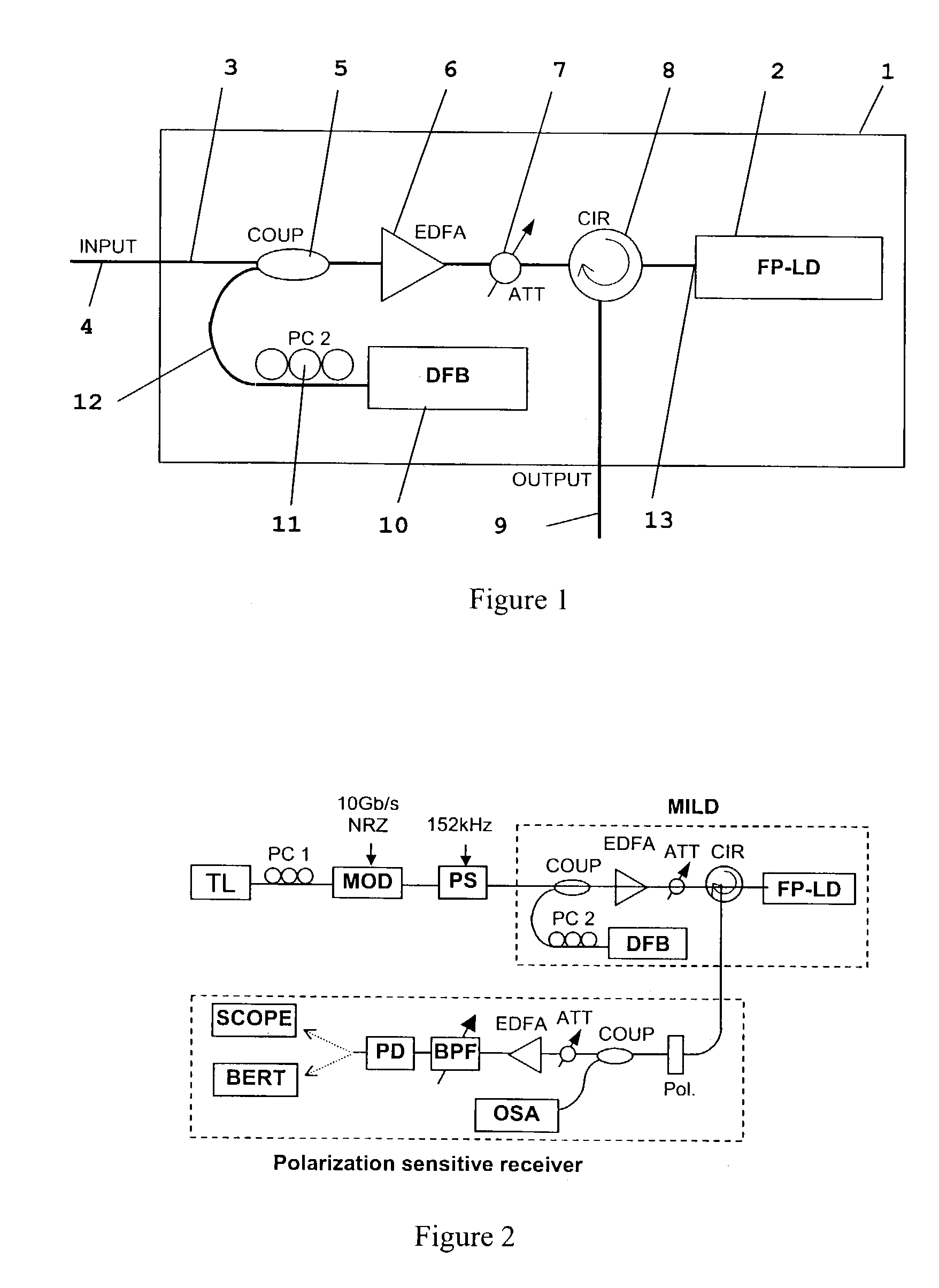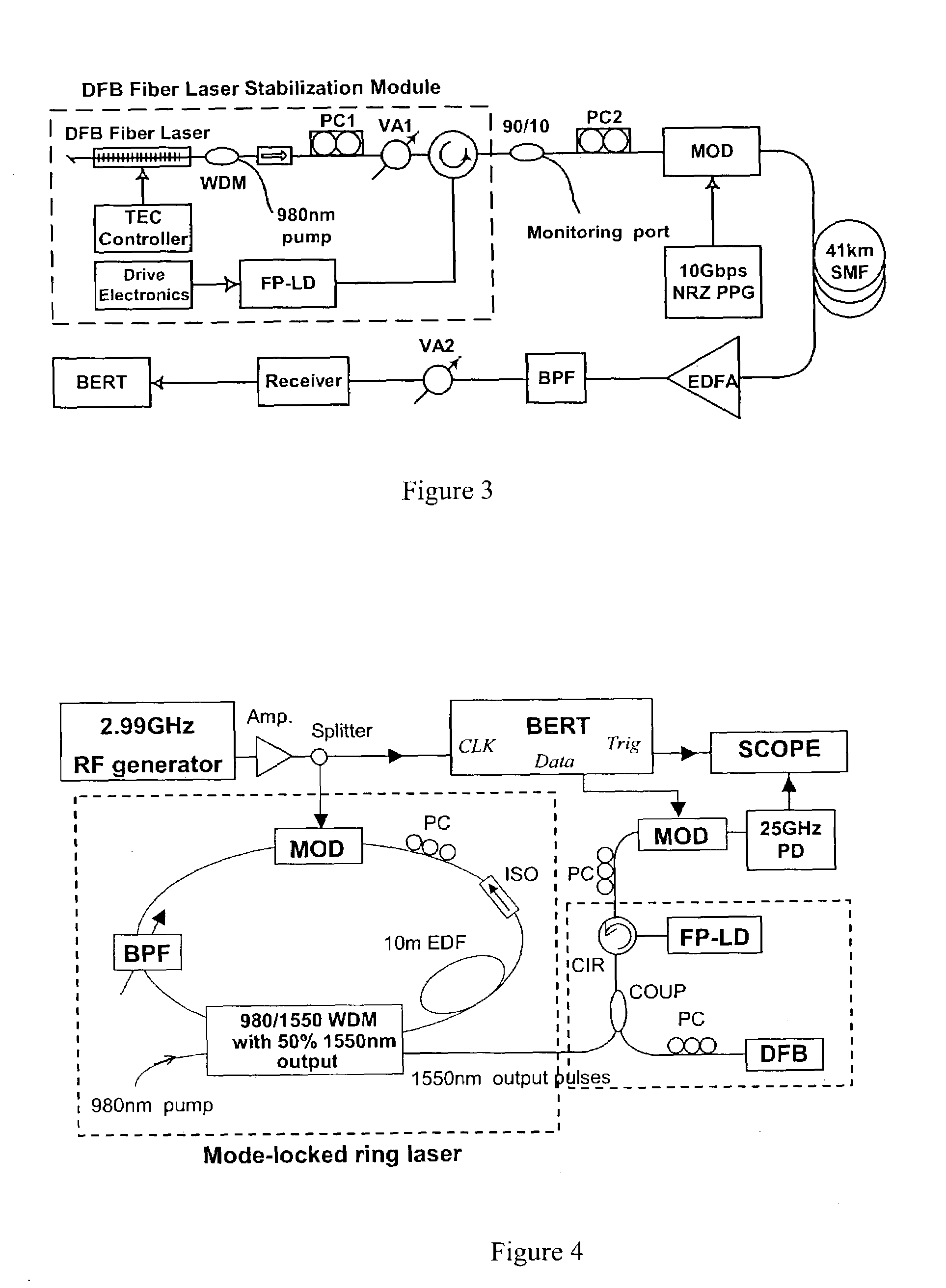Method and apparatus for controlling the polarization of an optical signal
a technology of optical signal and polarization state, applied in the direction of electrical apparatus, instrumentation, laser details, etc., can solve the problem of not being able to control a rapidly changing state of polarization (sop), and achieve the effect of overcompensating or ameliorating disadvantages
- Summary
- Abstract
- Description
- Claims
- Application Information
AI Technical Summary
Benefits of technology
Problems solved by technology
Method used
Image
Examples
Embodiment Construction
[0074]The state-of-polarization of an optical signal is stabilized by single wavelength injection-locking. The signal is injected into a laser diode with its wavelength matched to a longitudinal mode of the laser diode. The optical signal can be either in continuous wave (CW) form or in pulse mode form.
[0075]The laser diode aligns the varying states of polarization of the optical signal by acting as an intensity compensating polarizer. If the wavelength of the signal matches one of the longitudinal modes of the laser diode the transverse electric (TE) component is amplified and its intensity is stabilized while transverse magnetic (TM) components are absorbed. Thus, the laser diode functions as an intensity compensating polarizer with a transverse electric (TE) polarized output.
[0076]FIGS. 6a and 6b show the output spectra of a Fabry-Pérot laser diode (FP-LD) when injected by a TE and a TM polarized wavelength-tunable optical signal respectively. The injected signal power is −17 dBm...
PUM
| Property | Measurement | Unit |
|---|---|---|
| wavelength | aaaaa | aaaaa |
| wavelength | aaaaa | aaaaa |
| lasing wavelength | aaaaa | aaaaa |
Abstract
Description
Claims
Application Information
 Login to View More
Login to View More - R&D
- Intellectual Property
- Life Sciences
- Materials
- Tech Scout
- Unparalleled Data Quality
- Higher Quality Content
- 60% Fewer Hallucinations
Browse by: Latest US Patents, China's latest patents, Technical Efficacy Thesaurus, Application Domain, Technology Topic, Popular Technical Reports.
© 2025 PatSnap. All rights reserved.Legal|Privacy policy|Modern Slavery Act Transparency Statement|Sitemap|About US| Contact US: help@patsnap.com



